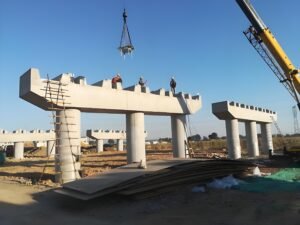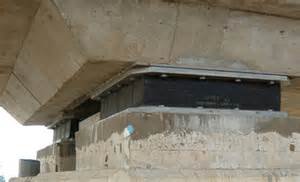Ρουλεμάν γέφυρας, though small components, play a pivotal role in ensuring the longevity and structural integrity of bridges. These seemingly inconspicuous elements are responsible for facilitating controlled movement within the bridge structure, thus preventing excessive stress and damage.
Enabling Bridge Movement
Bridge bearings are designed to allow both translational and rotational movements of the bridge superstructure. This flexibility is crucial to accommodate factors like thermal expansion and contraction, as well as seismic activity.
Stress Relief
Temperature variations can induce significant stresses on the superstructure and substructure of a bridge. Bridge bearings effectively release these stresses, preventing damage and excessive deformation, thereby protecting the bridge’s infrastructure.
Κατανομή Φορτίου
Bridge bearings are responsible for transferring vertical and longitudinal forces from the superstructure to a larger area of the substructure. This distributes the load more evenly, ensuring that the stresses developed within the substructure remain within permissible limits.
Vibration Absorption
Dynamic forces and vibrations can have a detrimental impact on the substructure of a bridge. Bridge bearings are designed to absorb these forces, preventing wear and destruction. This helps to maintain the structural integrity of the bridge over time.
Seismic Protection
In regions prone to earthquakes, bridge bearings act as a crucial line of defense. They help to arrest and dissipate energy during seismic events, protecting the bridge from damage and ensuring its continued functionality.
Corrosion Resistance
Bridge bearings are often exposed to harsh environmental conditions, including moisture, salt, and chemicals. To ensure their longevity, they are typically made from materials that are resistant to corrosion. This helps to prevent the deterioration of the bearings and maintain the bridge’s structural integrity.
Noise Reduction
Bridge bearings can also contribute to reducing noise levels, particularly in urban areas. By absorbing vibrations and preventing metal-to-metal contact, bearings can help to mitigate the noise generated by traffic and other sources.
Maintenance and Inspection
Regular maintenance and inspection of bridge bearings are essential to ensure their continued functionality. This may involve tasks such as lubrication, tightening bolts, and checking for signs of wear or damage. By proactively addressing any issues, it is possible to extend the lifespan of bridge bearings and prevent costly repairs.

συμπέρασμα
Bridge bearings, while often overlooked, are indispensable components of bridge structures. Their ability to facilitate movement, relieve stress, distribute loads, absorb vibrations, provide seismic protection, resist corrosion, reduce noise, and withstand regular maintenance is essential for ensuring the safety and longevity of bridges. Understanding the vital role of these bearings is crucial for effective bridge design, construction, and maintenance.
Frequently Asked Questions About Bridge Bearings
1. What are the different types of bridge bearings?
There are several types of bridge bearings, each with its own unique characteristics and applications:
- Ελαστομερή ρουλεμάν: Made from rubber-like materials, these bearings offer flexibility and can accommodate both vertical and horizontal movement.
- Mechanical bearings: These bearings use metal components to provide support and allow for controlled movement. They can be further classified into pinned bearings (which allow rotation in one direction) and fixed bearings (which permit only rotational movement).
- Ρουλεμάν δοχείων: These bearings consist of a steel pot filled with a high-density elastomeric material. They are often used in long-span bridges and can accommodate large movements.
2. How often do bridge bearings need to be inspected and maintained?
The frequency of inspections and maintenance for bridge bearings depends on various factors, including the type of bearing, the bridge’s location and environmental conditions, and the level of traffic it experiences. However, most bridge authorities recommend regular inspections and maintenance, typically every two to five years.
3. What are the signs of a failing bridge bearing?
Signs of a failing bridge bearing can include:
- Excessive noise or vibration
- Visible damage or cracking
- Unusual movement or deflection of the bridge
- Changes in the bearing’s alignment or position
If you notice any of these signs, it is important to contact a qualified bridge engineer for inspection and evaluation.
4. Can bridge bearings be repaired or replaced?
In some cases, bridge bearings can be repaired. However, if the damage is extensive or the bearing is nearing the end of its service life, it may be necessary to replace it. Bridge replacement is a complex and costly process, so it is important to prioritize regular maintenance and inspections to prevent premature failure.
5. What is the role of bridge bearings in seismic protection?
Bridge bearings play a crucial role in seismic protection by allowing the bridge to move and absorb energy during an earthquake. This helps to prevent damage to the bridge structure and reduce the risk of collapse.



